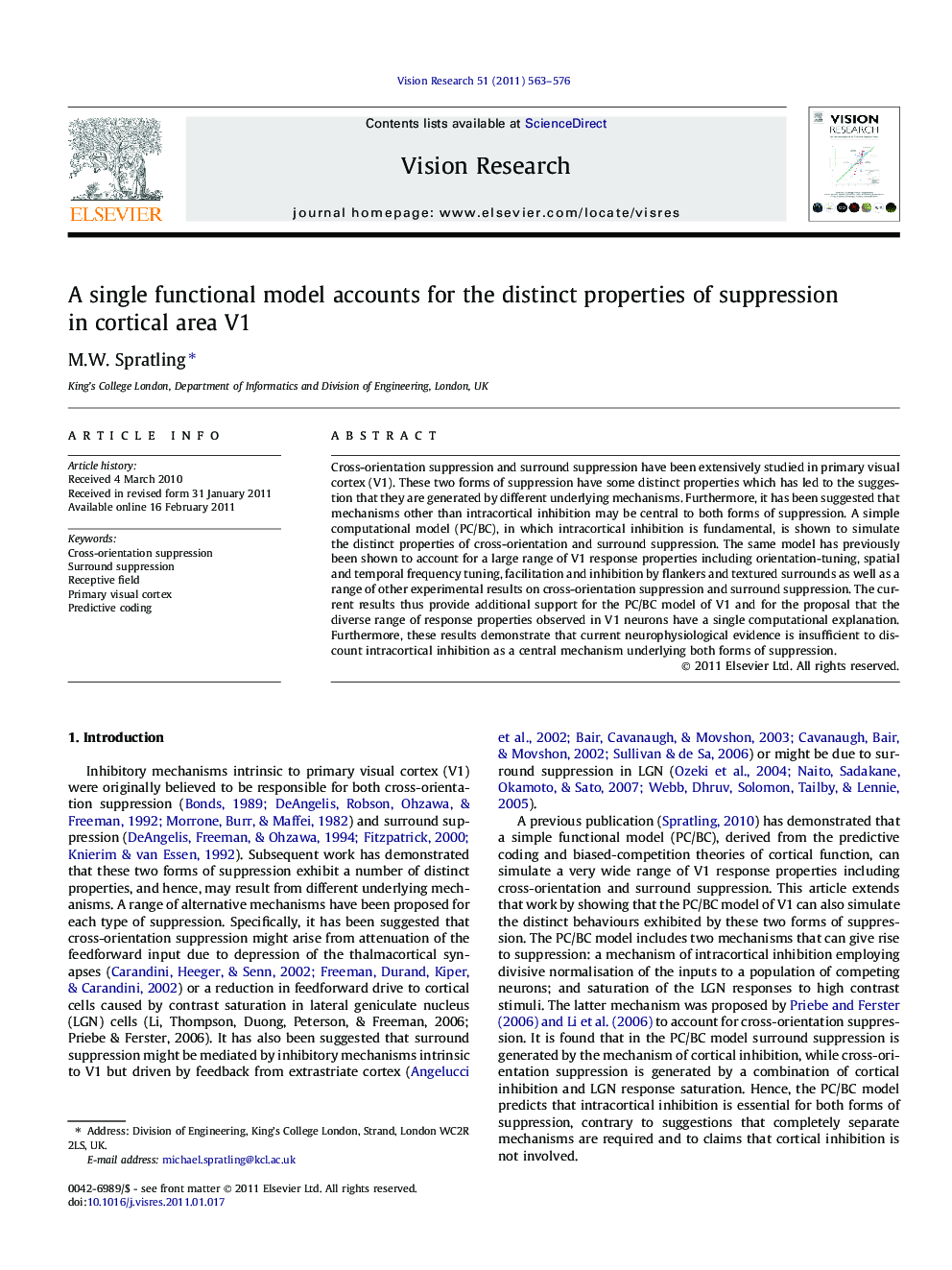| Article ID | Journal | Published Year | Pages | File Type |
|---|---|---|---|---|
| 4034163 | Vision Research | 2011 | 14 Pages |
Cross-orientation suppression and surround suppression have been extensively studied in primary visual cortex (V1). These two forms of suppression have some distinct properties which has led to the suggestion that they are generated by different underlying mechanisms. Furthermore, it has been suggested that mechanisms other than intracortical inhibition may be central to both forms of suppression. A simple computational model (PC/BC), in which intracortical inhibition is fundamental, is shown to simulate the distinct properties of cross-orientation and surround suppression. The same model has previously been shown to account for a large range of V1 response properties including orientation-tuning, spatial and temporal frequency tuning, facilitation and inhibition by flankers and textured surrounds as well as a range of other experimental results on cross-orientation suppression and surround suppression. The current results thus provide additional support for the PC/BC model of V1 and for the proposal that the diverse range of response properties observed in V1 neurons have a single computational explanation. Furthermore, these results demonstrate that current neurophysiological evidence is insufficient to discount intracortical inhibition as a central mechanism underlying both forms of suppression.
Research highlights► PC/BC is shown to account for both surround and cross-orientation suppression in V1. ► This shows that the same mechanisms can underly these different forms of suppression. ► PC/BC proposes intracortical inhibition as the primary mechanism for suppression. ► Neurophysiological evidence has been used to argue against an intracortical account. ► This evidence is insufficient to eliminate an intracortical account of suppression.
